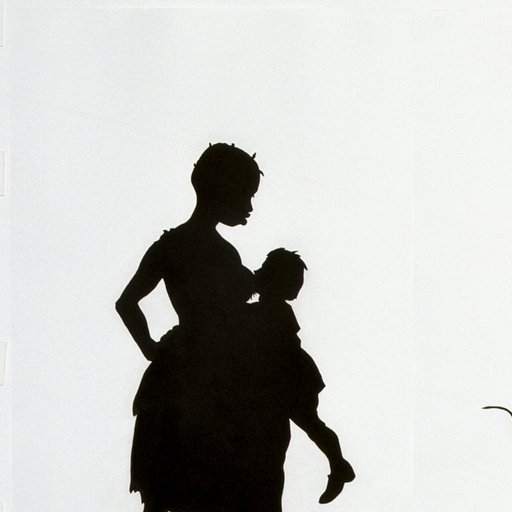The video work Black Magic at the White House by Jennette Ehlers that was featured in the 4th MOOC immediately made me think of the work of Kara Walker. In addition to the similarity in the forms of the figures in Ehlers’ video and the silhouettes of Walker, both share the decolonial theory – bringing together contemporary approaches to art making with the longer history of art making.
In addition to her work A Subtletly, a monumental sugar coated sculpture of a sphinx woman that was produced in collaboration with Creative Time, Walker is best known for her paper silhouettes. These works use the very Victorian traditional form of the paper silhouette to explore issues of race, gender, and cultural identity. Much of what Walker deals with takes narratives from the history of slavery and the civil war and reproduces them in a form that is romantic in its simplistic form and bluntly confrontational in its literally black and white representation. Ehlers also works closely with the history of the slave trade, focusing her work on Dutch involvement.
One could argue that Walker is right on the line of antagonistic art practice that is discussed by Claire Bishop. There is little doubt that Walker’s works exacerbate social tension and seek out the discomfortable in many ways, and some of the works deal with highly sexual or violent images. Yet the romanticism and whimsicality that is associated with the silhouette form makes the works easier to engage with and still highly desirable for display in a home or private collection.
Can the same be said for A Subtletly? I would argue that the combination of the colossal scale, the narratives of power and slavery that are contorted with the sphinx, and the recognition of black racial stereotypes place the work firmly within the bounds of antagonistic practice. This then leads me to question the difference between interpretation and desirability of the domino sculpture and her silhouette figures. Are scale and size truly the only differentiating factors in these works, or is there more that separates and defines one so clearly as antagonistic practice, and the other less so?
To see Kara Walker’s work with Creative Time: http://creativetime.org/projects/karawalker/


